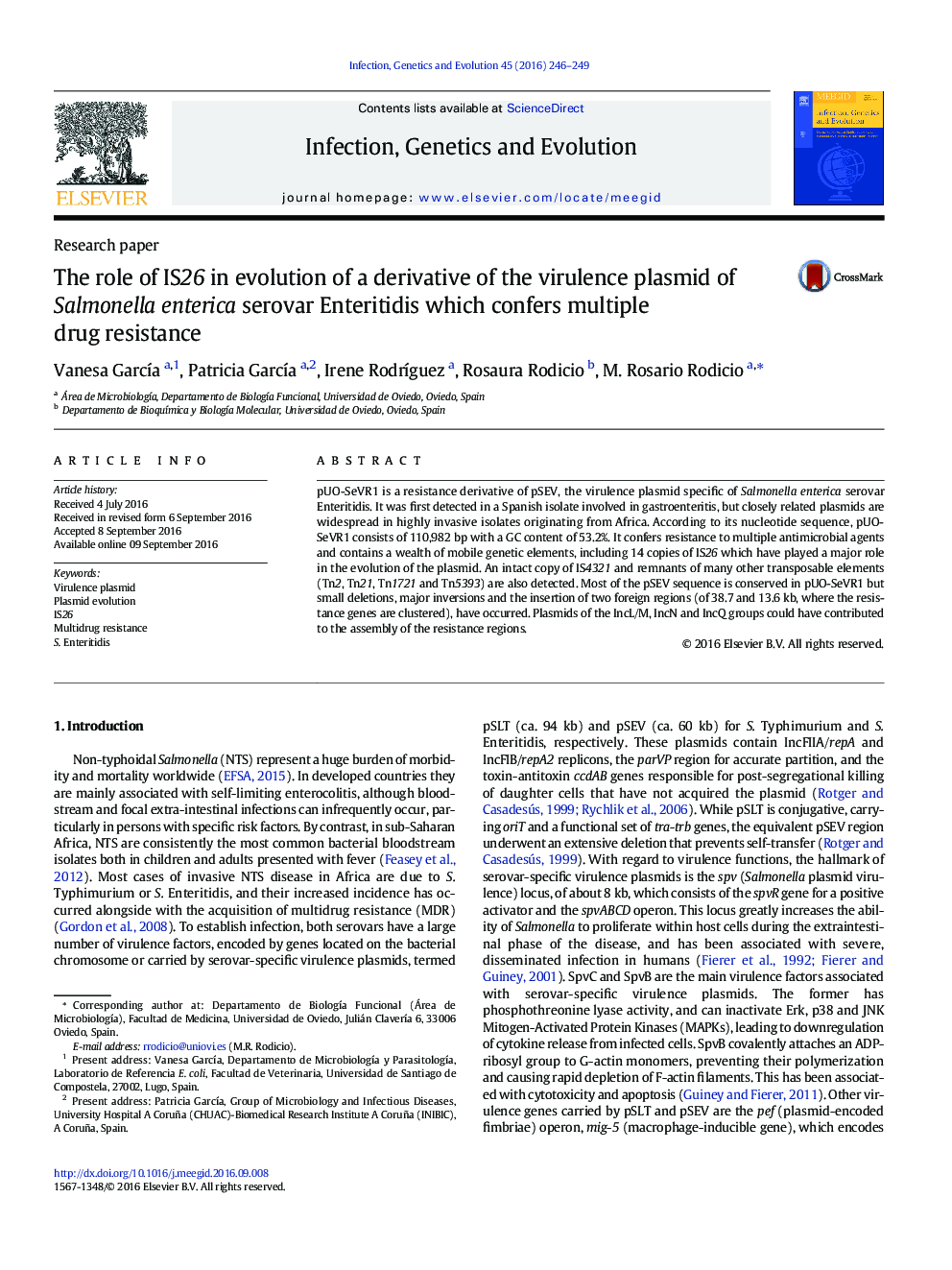| Article ID | Journal | Published Year | Pages | File Type |
|---|---|---|---|---|
| 2822876 | Infection, Genetics and Evolution | 2016 | 4 Pages |
Abstract
pUO-SeVR1 is a resistance derivative of pSEV, the virulence plasmid specific of Salmonella enterica serovar Enteritidis. It was first detected in a Spanish isolate involved in gastroenteritis, but closely related plasmids are widespread in highly invasive isolates originating from Africa. According to its nucleotide sequence, pUO-SeVR1 consists of 110,982Â bp with a GC content of 53.2%. It confers resistance to multiple antimicrobial agents and contains a wealth of mobile genetic elements, including 14 copies of IS26 which have played a major role in the evolution of the plasmid. An intact copy of IS4321 and remnants of many other transposable elements (Tn2, Tn21, Tn1721 and Tn5393) are also detected. Most of the pSEV sequence is conserved in pUO-SeVR1 but small deletions, major inversions and the insertion of two foreign regions (of 38.7 and 13.6Â kb, where the resistance genes are clustered), have occurred. Plasmids of the IncL/M, IncN and IncQ groups could have contributed to the assembly of the resistance regions.
Related Topics
Life Sciences
Agricultural and Biological Sciences
Ecology, Evolution, Behavior and Systematics
Authors
Vanesa GarcÃa, Patricia GarcÃa, Irene RodrÃguez, Rosaura Rodicio, M. Rosario Rodicio,
